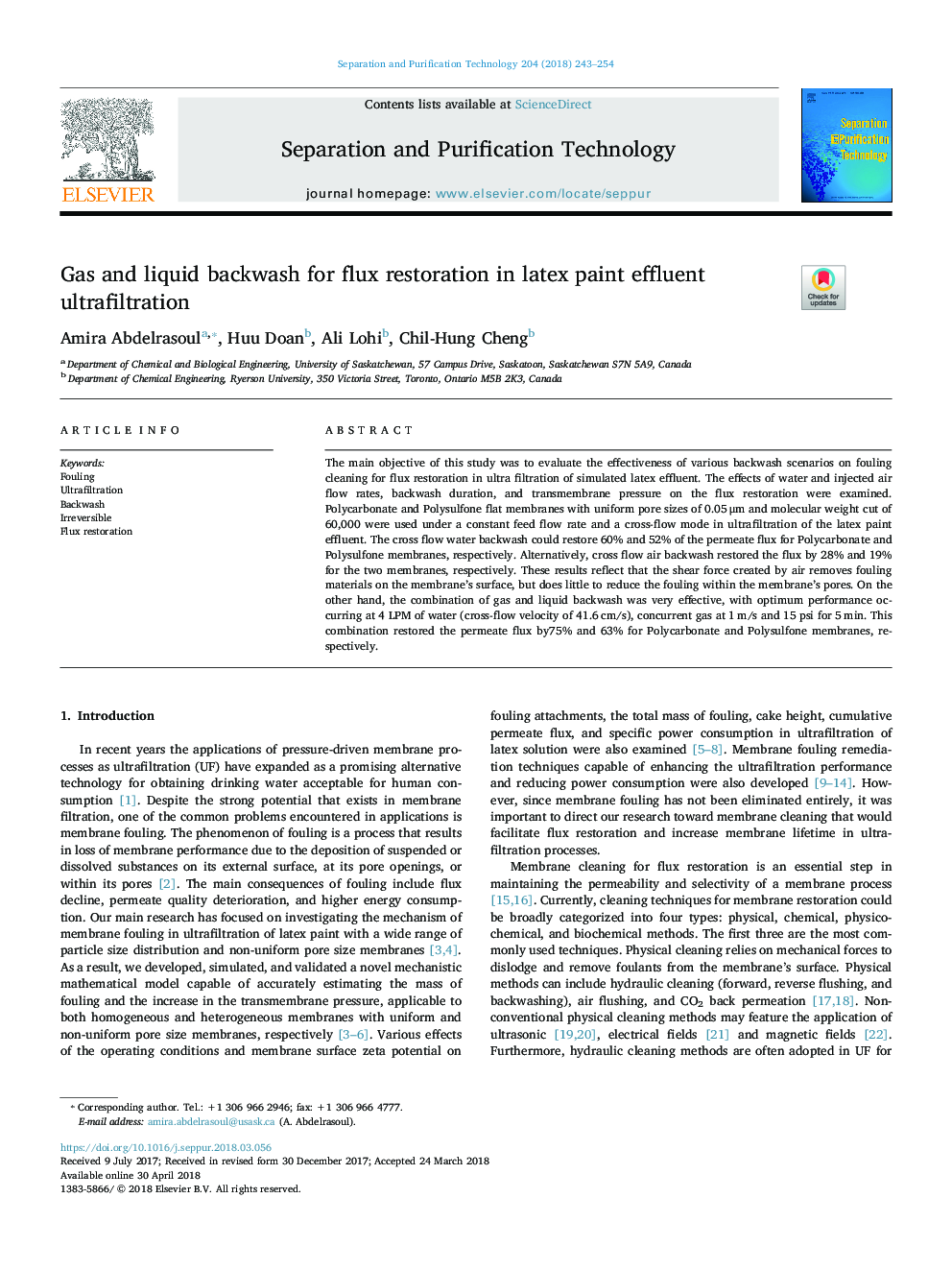| Article ID | Journal | Published Year | Pages | File Type |
|---|---|---|---|---|
| 7043667 | Separation and Purification Technology | 2018 | 12 Pages |
Abstract
The main objective of this study was to evaluate the effectiveness of various backwash scenarios on fouling cleaning for flux restoration in ultra filtration of simulated latex effluent. The effects of water and injected air flow rates, backwash duration, and transmembrane pressure on the flux restoration were examined. Polycarbonate and Polysulfone flat membranes with uniform pore sizes of 0.05â¯Î¼m and molecular weight cut of 60,000 were used under a constant feed flow rate and a cross-flow mode in ultrafiltration of the latex paint effluent. The cross flow water backwash could restore 60% and 52% of the permeate flux for Polycarbonate and Polysulfone membranes, respectively. Alternatively, cross flow air backwash restored the flux by 28% and 19% for the two membranes, respectively. These results reflect that the shear force created by air removes fouling materials on the membrane's surface, but does little to reduce the fouling within the membrane's pores. On the other hand, the combination of gas and liquid backwash was very effective, with optimum performance occurring at 4 LPM of water (cross-flow velocity of 41.6â¯cm/s), concurrent gas at 1â¯m/s and 15 psi for 5â¯min. This combination restored the permeate flux by75% and 63% for Polycarbonate and Polysulfone membranes, respectively.
Related Topics
Physical Sciences and Engineering
Chemical Engineering
Filtration and Separation
Authors
Amira Abdelrasoul, Huu Doan, Ali Lohi, Chil-Hung Cheng,
